A Discourse on the Merits and Demerits of Common Fabrics – Ⅱ
Published On: April 26, 2024 By: chen hui

In our ongoing sartorial odyssey, we – Aung Crown, your esteemed purveyor of custom hat manufacturers, embark on a fresh exploration to elucidate the advantages and disadvantages of commonly encountered fabrics. Today’s discourse centers on wool, silk, and fiber.
Wool

1. Cashmere
Worsted cashmere
Exquisitely thin, worsted cashmere boasts a meticulously smooth surface, its texture unveiled with pristine clarity. The inherent luster is soft and subdued, a gentle play of light upon its luxurious fibers. To the touch, it offers a delightful bounce, yielding to your grasp and then returning to its flawless form. Remarkably resilient, even the tightest squeeze leaves virtually no trace, any fleeting wrinkles vanishing as if by magic.
Woolen spun cashmere
Woolen-spun cashmere unfolds as a luxuriously thick yarn, its generous bounty evident in its plump embrace. Unlike its worsted cousin, the sheen here is a hushed whisper, a soft gathering of light amidst the densely packed fibers. The surface, a plush paradise, veils its underlying texture, only hinting at the rich weave beneath. This tactile experience is a paradox: undeniably soft to the touch, yet imbued with a subtle structure, and surprisingly resilient in its stretch.
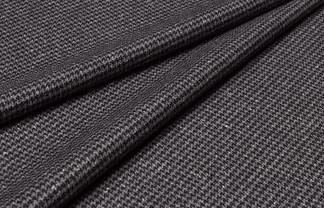
2. Wool blend
Wool and polyester blend
Advantages:
While the wool-polyester blend boasts a captivating sheen under illumination, its structure leans towards the resolute, lacking the yielding drape of cashmere. This resilience, however, manifests as remarkable wrinkle resistance, any fleeting creases disappearing with alacrity.
Disadvantages:
On the other hand, this very stiffness comes at the cost of suppleness; the luxurious softness and plumpness of cashmere are absent here. As the polyester content rises, these drawbacks become increasingly pronounced, the tactile experience falling short of both cashmere and wool-acrylic blends.
Wool and viscose blend
The luster of this blend leans towards a subdued richness, lacking the high shine of its competitors. The worsted weave presents a deceptively soft touch, devoid of pronounced textures. In contrast, the woolen-spun weave offers a relaxed drape, its fibers yielding gently to the caress. While the stretch and resilience may not rival cashmere, wool-polyester, or wool-acrylic blends, this fabric prioritizes comfort with its soft, yielding nature. However, a high viscose content renders it susceptible to wrinkles, demanding a touch more care.
Artificial wool fiber
Here’s the improved description of artificial wool fiber:
Traditional Rayon Blends:
This earlier generation of artificial wool, often a viscose and artificial hair blend, exhibits a subdued luster rather than a bright sheen. While the touch is undeniably soft, it lacks the subtle structure found in natural fibers. The drape tends to be relaxed due to its limited resilience. This translates to a higher susceptibility to wrinkles and a slower recovery from them. A simple test to identify viscose content involves wetting a strand of yarn; its strength will diminish significantly compared to its dry state. Furthermore, these fabrics tend to thicken upon exposure to moisture.
Modern Advancements:
Fortunately, technological advancements have yielded significant improvements in artificial wool fibers. The luster now rivals its natural counterparts, offering a broader range of light interaction. The hand has become more sophisticated, mimicking the subtle structure and resilience of natural fibers. Durability has also seen marked improvement. As the realm of high-tech fabrics continues to expand, the textile world offers an ever-more vibrant palette for the discerning consumer.
Purified fiber imitation wool
Advantages:
- Natural Aesthetic: This fiber offers a pleasingly natural look and readily accepts dyes, resulting in a wide array of vibrant and colorfast hues.
- Luster and Structure: It possesses a pleasant sheen and maintains a good drape due to its inherent stiffness.
- Stretch and Recovery: While not as elastic as some natural fibers, regenerated wool often exhibits good wrinkle resistance and shape retention.
- Accessibility: Generally affordable and widely available, making it a practical choice for many consumers.
Disadvantages:
- Limited Tactility: The smoothness can feel less luxurious compared to natural fibers.
- Drape: Due to its stiffness, the drape might not be as fluid as some natural materials.
- Luster: Dark without luster.
Viscose
Advantages:
- Luxurious Luster: Viscose boasts a brighter sheen than cotton, offering a more opulent appearance.
- Smoothness and Drape: It delivers a remarkably soft and supple hand, cascading beautifully due to its heavier drape.
Disadvantages:
- Limited Stretch: Viscose lacks the elasticity of some fabrics, making it more prone to wrinkling.
- Wrinkle Recovery: While wrinkles may form easily, they are generally quite forgiving and recover well.
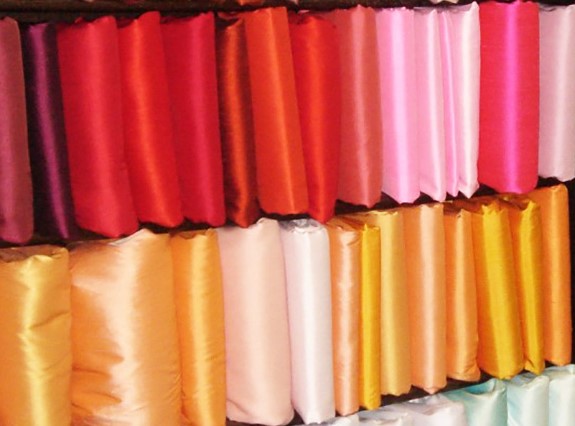
Silk fabrics
Fabrics that are composed of natural silk.
Silk
Advantages:
- Luxurious Luster: Silk possesses a beautiful sheen that is both rich and vibrant, adding a touch of elegance to any garment.
- Exceptional Softness: It offers a remarkably soft and smooth hand, providing a comfortable and luxurious feel against the skin.
- Wrinkle Resistance: Silk has good wrinkle resistance, making it a practical choice for clothing that needs to maintain its drape.
- Natural Elasticity: While not as stretchy as some fabrics, silk possesses a degree of elasticity that contributes to its comfortable wear.
Disadvantages:
- Delicate and Prone to Snags: Silk can snag or pull easily if snagged on rough surfaces.
- Colorfastness: Some dyes may not adhere to silk as well as to other fibers, potentially leading to color fading.
- Special Care Requirements: Silk requires delicate handling and specific cleaning methods to maintain its beauty and longevity.
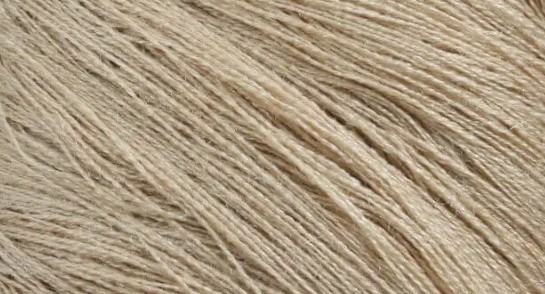
Tussah silk
Advantages:
- Enhanced Functionality: Compared to mulberry silk, Tussah silk boasts superior moisture-wicking properties, keeping you cooler and drier. It also exhibits greater heat resistance and breathability, making it a comfortable choice for warmer climates. Additionally, its acid resistance offers a practical advantage.
Disadvantages:
- Subdued Luster: While Tussah silk possesses a natural sheen, it may lack the refined brilliance of mulberry silk.
- Tactile Difference: The hand of Tussah silk can feel slightly less supple compared to mulberry silk.
Spun silk or yarn
Spun silk is a versatile yarn crafted from short silk fibers leftover from the silk production process, or by using damaged silkworm cocoons. These fibers are spun together, similar to cotton or wool yarns. Spun silk can be further categorized by thickness.
Advantages:
- Lustrous Appeal: Spun silk retains a beautiful luster, offering a touch of luxury to garments.
- Textural Variation: Spun silk yarns can create a range of interesting textures, from smooth and sleek to nubby and rustic, depending on the processing techniques.
- Durability: While not as strong as filament silk, spun silk offers greater durability compared to some other natural fibers like linen.
Disadvantages:
- Inherent Imperfections: Spun silk may contain slight variations in thickness or color due to the use of shorter fibers. However, many appreciate this as part of its natural charm.
- Strength: Compared to filament silk, spun silk has slightly reduced strength.
- Note: The statement about spun silk’s popularity being “low-level” might be subjective. Spun silk offers unique aesthetics and practical advantages, making it a popular choice for many textile applications.
Real silk
Advantages:
- Luxuriously Soft: Real silk boasts an exceptional softness that pampers the skin with its gentle touch.
- Natural Stretch: It possesses a subtle degree of elasticity, enhancing comfort and freedom of movement.
- Subtle Sheen: Real silk exhibits a beautiful luster that is both luminous and understated, adding a touch of elegance without overwhelming the eye.
- Resilient Draping: While silk can wrinkle, these wrinkles tend to fall softly and often disappear with gentle hanging.
Disadvantages:
- Delicate Care: Real silk requires special handling and dry cleaning to maintain its beauty and longevity. It’s not recommended for machine or hand washing.
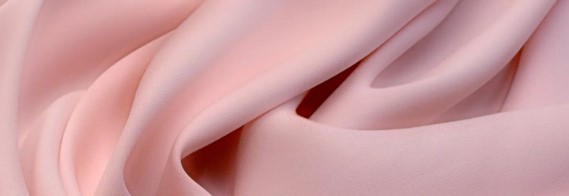
Rayon silk
Advantages
- Drape and Structure: Rayon silk offers a more structured drape compared to pure silk, creating clean lines and flattering silhouettes.
- Cool and Crisp Touch: It possesses a pleasant coolness to the touch, making it a comfortable choice for warmer weather.
Disadvantages:
- Limited Softness: While rayon silk can be smooth, it generally lacks the luxurious softness of pure silk.
- Wrinkle Prone: Similar to most rayons, rayon silk can wrinkle more readily than pure silk.
Note: Rayon silk is not a true silk, but a blend that combines rayon fibers with silk fibers. It offers a more affordable alternative to pure silk but with some trade-offs in terms of hand and wrinkle resistance.

Chiffon
Chiffon, a captivating fabric renowned for its lightness and translucency, comes in various compositions such as silk, rayon, or polyester.
Advantages:
- Luxuriously Soft and Flowing: Chiffon offers an incredibly soft and fluid feel against the skin, creating garments that drape beautifully and move with grace.
- Lightweight and Breathable: Its sheer nature and low weight make it an ideal choice for warmer weather or garments that require a touch of ethereal elegance.
- Clean and Elegant Look: The smooth, plain weave of chiffon presents a crisp and sophisticated appearance.
- Superior Drape: Chiffon’s exceptional drape allows for garments with cascading silhouettes and fluid movement.
Disadvantages:
- Delicate and Prone to Snags: Chiffon’s delicate nature makes it susceptible to snags or pulls if snagged on rough surfaces.
- Limited Structure: Due to its lightweight and flowing properties, chiffon may lack structure and can lose its shape at the hem if not carefully constructed.
Crepe de chine
Crepe de chine is a luxurious fabric treasured for its subtle yet captivating texture. Its surface is characterized by a soft, even pleated appearance, adding a touch of visual intrigue.
Advantages:
- Lightweight and Soft: Crepe de chine offers a delightful combination of lightness and a remarkably soft feel against the skin.
- Luminous Sheen: It possesses a beautiful luster that is both colorful and subdued, adding a touch of elegance without overpowering the eye.
- Surprisingly Stretchy: Despite its delicate appearance, crepe de chine offers a surprising degree of stretch, enhancing comfort and freedom of movement.
- Cool and Breathable: The lightweight weave and natural fibers make crepe de chine a comfortable choice for warm weather, allowing for excellent breathability.
Disadvantages:
- Denser Weave Compared to Chiffon: While lightweight, crepe de chine has a slightly denser weave compared to chiffon, resulting in a fabric with a touch more weight.
- Potential for Shrinkage: Crepe de chine can exhibit some shrinkage, typically around 10%. However, reputable retailers often pre-shrink fabrics before selling them for garment construction.
Taffeta
Taffeta, a timeless fabric celebrated for its richness and structure, boasts a complex plain weave. This intricate process contributes to its placement amongst top-grade textiles. Taffeta’s popularity endures, captivating audiences in Europe and the United States alike, particularly when used for females’ elegant gowns.
Advantages:
- Exquisite Surface: Taffeta features a meticulously smooth surface, its fine weave offering a luxurious appearance.
- Rich Luster: It possesses a captivating sheen, adding a touch of grandeur to any garment.
- Structured Beauty: The tight weave of taffeta creates a beautiful stiffness, ideal for garments that require a defined shape and a touch of volume.
Disadvantages:
- Prone to Creasing: Due to its structured nature, taffeta can develop permanent creases if folded or compressed for extended periods. Special care in storage and handling is recommended.
Fibers

1. Natural fibers
Cashmere
Cashmere, revered for its luxurious softness and exceptional warmth, is a top-grade material prized for creating garments of unparalleled comfort. Its lightweight nature defies its remarkable ability to insulate, making it ideal for cozy yet elegant apparel.
Wool fabric
Wool, a versatile and naturally occurring fiber, offers a multitude of benefits:
Advantages:
- Natural Stretch and Wrinkle Resistance: Wool possesses a surprising degree of elasticity, allowing for comfortable movement and helping garments retain their shape. Additionally, it boasts a natural resistance to wrinkles, making it a practical choice for everyday wear.
- Subtle Luster and Sheen: Wool offers a soft, muted luster that adds a touch of sophistication to garments.
- Natural Resilience: Wool fibers are naturally resistant to acids, offering an advantage in terms of durability.
Disadvantages:
- Loses Elasticity When Wet: While wool resists wrinkles, it can lose some of its stretch when wet. Proper care is crucial to maintain its shape.
- Delicate Care Required: Wool is a delicate fiber and requires specific washing methods, such as hand washing or dry cleaning, to preserve its beauty and longevity.
Sheep hair
Sheep hair offers a unique combination of comfort and durability.
- Plump and Lofty: Sheep hair boasts a generous fullness and fluffiness, creating a feeling of warmth and comfort.
- Soft and Supple: It delivers remarkable softness, providing a gentle touch against the skin.
- Natural Sheen: While the luster might not be as high as some other fibers, sheep hair possesses a pleasant, natural shine.
- Surprisingly Stretchy: Sheep hair offers a degree of elasticity, enhancing comfort and freedom of movement in garments.
- Durable and Textured: The fibers possess a certain sturdiness, contributing to the overall strength and textured look of the fabric.
Sheep hair’s visual texture might be more prominent than some other fibers, but this can also be a desirable quality, depending on the look you’re going for.
Goat hair
Exuding a remarkably smooth surface with occasional hints of whimsical curls, goat hair boasts impressive length alongside a pleasantly coarse character. Belying its inherent sturdiness, it delivers a touch as soft as silk, gleaming with a captivating luster and surprising elasticity. Renowned for its exceptional wear resistance and durability, goat hair emerges as the quintessential top-grade material for the creation of Jacquard blankets, luxuriously smooth long-haired coats, and even impeccably crafted artificial leather.
Alpaca hair
Alpaca hair boasts an unparalleled range of natural colors, encompassing over 17 distinct clusters that gracefully transition from the purest white to the deepest black. This spectrum is further enriched by a captivating array of intermediate hues, from the warm depths of dark brown to the gentle coolness of light fawn and sophisticated shades of gray. Amongst all-natural animal fibers, alpaca hair reigns supreme in the richness and variety of its color palette. The alpaca hair encountered in the marketplace represents the very essence of this remarkable fiber.
- Exquisitely Long Fibers: Alpaca hair is prized for its exceptional fiber length, contributing to the creation of luxurious and smooth fabrics.
- Brilliant Luster: It possesses a luminous sheen that adds a touch of elegance and sophistication to any garment.
- Superior Warmth: Alpaca hair offers an exceptional level of warmth, surpassing even cashmere, wool, and mohair in its ability to insulate.
2. Chemical fibers
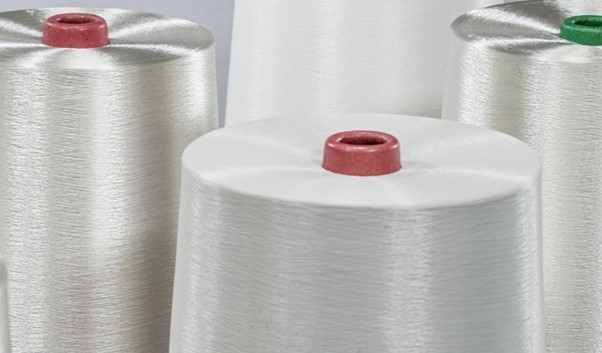
Regenerated fibers
Regenerated fibers offer a compelling combination of functionality and aesthetics:
Advantages:
- Superior Moisture Management: These fibers excel at wicking away moisture from the body, keeping you comfortably dry and cool.
- Exceptional Breathability: They allow for excellent air circulation, promoting a comfortable wear experience.
- Luxuriously Soft: Regenerated fibers deliver a delightful softness against the skin, offering a sense of cozy indulgence.
- Vibrant Color Spectrum: They accept dyes exceptionally well, resulting in a vast array of rich and colorful hues.
- Luminous Sheen: Many regenerated fibers possess a beautiful luster that adds a touch of elegance to garments.
Disadvantages:
- Wrinkle Susceptibility: Regenerated fibers can be prone to wrinkling, requiring more attention to care and storage.
- Limited Drape Structure: They may not offer the same level of structured drapes as some natural fibers.
- Potential for Shrinkage: Certain regenerated fibers may exhibit some shrinkage, so following proper care instructions is essential.
Polyester
Advantages:
- Exceptionally Durable: Polyester boasts remarkable resilience, resisting wear and tear with exceptional fortitude. Its inherent strength makes it a long-lasting choice for garments and other textile applications.
- Crisp and Tailored: The fibers possess a natural stiffness that contributes to crisp tailoring and wrinkle resistance, ensuring garments maintain their polished appearance.
- Efficient Drying: Fabrics made from polyester dry quickly, offering convenience and practicality.
- Resilient and Moth-Resistant: Unlike natural fibers, polyester is resistant to damage from moths and insects, providing added peace of mind. Mold-resistant.
- Easy Care: It requires minimal upkeep, making it an attractive choice for busy lifestyles.
- Versatile Blending: Polyester readily blends with other fibers, such as cotton, to create improved and more affordable fabrics with a wider range of functionalities.
Disadvantages:
- Limited Breathability: Air permeability can be restricted in pure polyester fabrics, potentially leading to a feeling of stuffiness in warm weather.
- Comfort Considerations: While comfortable in some blends, polyester alone may not provide the same level of cozy softness as natural fibers like cotton.
- Prone to Static Cling: Polyester fabrics can attract lint and dust due to static cling, requiring attention to lint removal.
- Pilling Potential: Under certain conditions, polyester can develop a surface layer of tiny balls of fiber, known as pilling.
Nylon
Advantages:
- Exceptional Elasticity: Nylon offers remarkable stretch and resilience, mirroring the comfortable flexibility of wool. This property allows for garments that move with the body and retain their shape over time.
- Superior Durability: Nylon boasts exceptional strength and resilience, making it resistant to wear and tear. This characteristic ensures garments made from nylon will provide long-lasting wear.
- Warmth and Sun Protection: Nylon effectively insulates, offering comfortable warmth in cooler temperatures. Additionally, it provides a good level of sun protection.
Disadvantages:
- Limited Moisture Management: Nylon itself is not particularly breathable and may trap moisture next to the skin.
- Comfort Considerations: While comfortable in blends, pure nylon garments may not provide the same level of cozy softness as natural fibers.
Note: Blending nylon with other fibers can significantly improve its moisture-wicking properties and overall comfort.

Acrylic fabric
Advantages:
- Lightweight and Lofty: Acrylic fabric boasts an impressive combination of lightness and a delightful fluffiness. This creates garments that feel remarkably airy and comfortable.
- Soft and Supple: It offers a pleasing softness against the skin, delivering a gentle touch. While not quite as luxurious as cotton, it provides a comfortable wear experience.
- Resilient with a Hint of Curl: The fibers exhibit good elasticity, allowing for garments that retain their shape with a touch of charming texture.
Disadvantages:
- Softness Compared to Cotton: While comfortable, acrylic fabric may not achieve the same level of luxurious softness as cotton.
Spandex
Advantages:
- Unmatched Elasticity: Spandex boasts unparalleled stretch and recovery properties, allowing for garments that move effortlessly with the body and hug the figure comfortably.
- Durable and Resilient: Despite its remarkable stretch, Spandex offers surprising durability, resisting abrasion, acids, and alkalis. This makes it a valuable component in many fabric blends.
- Cozy and Comfortable: Spandex contributes a delightful sense of comfort to garments.
Disadvantages:
- Moisture Management: Spandex itself has limited moisture-wicking abilities, and can trap sweat next to the skin. It’s typically blended with other fibers to improve breathability.
- Limited Heat Resistance: While durable in many ways, Spandex can be susceptible to damage from high heat. Blending and proper care are essential for longevity.
- Relies on Blending: Spandex is not typically used alone as a fabric due to its low strength and lack of moisture-wicking properties. It shines when blended with other fibers to create functional and comfortable textiles.
Vinylon
Advantages:
- Remarkably Strong: Vinylon boasts exceptional strength, making it highly resistant to wear and tear. This translates to garments that offer long-lasting durability.
- Effective Moisture Management: Unlike some synthetic fibers, Vinylon offers good moisture-wicking properties, helping to keep you dry and comfortable.
- Natural Pest Resistance: Vinylon is inherently resistant to moths and other insects, providing built-in protection for your garments.
Disadvantages:
- Limited Heat Resistance: Vinylon can be susceptible to damage from high heat, so proper care is essential.
- Shrinkage Prone: This material can shrink after exposure to water, so following recommended washing and drying instructions is crucial.
- Color Limitations: Vinylon may not accept dyes as vibrantly as some other fibers, potentially resulting in a more muted color palette.
Polypropylene
Advantages:
- Exceptional Strength and Elasticity: Polypropylene offers a compelling combination of remarkable strength and surprising stretch. This makes it a durable and versatile fiber for a variety of applications.
- Shape Retention: The fibers exhibit excellent dimensional stability, resisting shrinkage and warping, ensuring garments retain their shape over time.
Disadvantages:
- Limited Moisture Management: Polypropylene itself does not wick away moisture effectively, and can trap sweat next to the skin. Special treatments are required to improve breathability.
- Susceptible to Light and Heat Degradation: Over time, prolonged exposure to sunlight or high heat can damage polypropylene fibers, leading to potential weakening or color fading.
